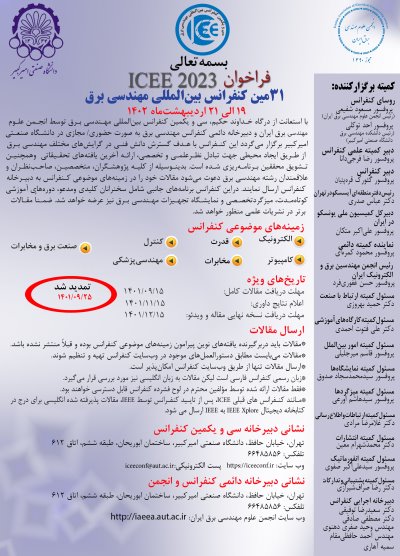0% Complete

نویسندگان :
کلمات کلیدی :
چکیده :
لیست مقالات بایگانی شده
بهنام بهارلوئی - رضا قندهاری - مهدی بابایی - یوسف عطائی
Marzie Parooei - Mehdi Tale Masouleh - Ahmad Kalhor
Rafi Zahedi - Hassan Rastegar
مهدی مظفری - سعید جعفری نسب - حامد پورکاوه - سعید شمقدری
Alireza Mohammadi - Ali Doustmohammadi - Masoud Shafiee
Mohammadsadegh Poushnegar - Mahmoud Tabandeh - Meysam Nesary Moghadam - Farzam Gilani - Ali Aghakasiri
Milad Tahvilzadeh - Mehdi Aliyari Shooredeli - Ali asghar Razi Kazemi
Saeed Abbasi FallahPour - Shokrollah Karimian - ٍEsfandiar Mehrshahi
Milad Seyedi - Nasser Masoumi - Samad Sheikhaei
Mohammad Amin Chaychi zadeh - Nader Komjani





